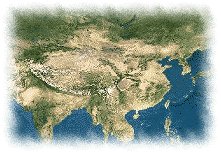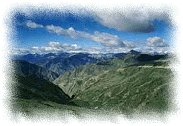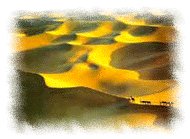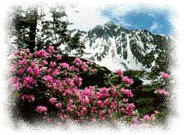The Land Of China -- General Information
The land of China is very big. It is not only the world's third largest country in area, behind only to Russia and Canada.; it is also the world's largest country in population, containing about a fifth of all humanity. China lies in eastern Asia and covers more than a fifth of the continent.
 |
So one can find about anything in China. Its variety of natural features bring towering cities or isolated villages; dry deserts or humid forests; grandeur mountains or neverending plains--mix and match, put them together. It's all in the Land of China.
| GENERAL FACTS | |
|---|---|
| Land Area: | 3,678,470 mi2; 9,527,200 km2 |
| North-South Distance: | 2,500 mi; 4,023 km |
| East-West Distance: | 3,000 mi; 4,828 km |
| Coastline Distance: | 4,019 mi; 6,468 km |
| Highest Elevation: | Mount Everest. 29,028 ft; 8,848 mi |
| Lowest Elevation: | Turpan Depression. -505 ft, -154 m |
| Terrain: | West - mountains, plateaus, deserts East - plains, deltas, hills |
| Land Use: | Arable land - 10% Permanent crops - neglible Meadows and Pastures - 31% Forest and Woodland - 14% other - 45% |
| Population: | 1,159,133,000 (estimated 1994) |
 |
Several areas of China have traditionally been known by certain names. Northeastern China has been called Manchuria, yet today, it is simply the Northeast. Xinjiang covers the far northwest, and Tibet covers the far southwest. Inner Mongolia lies in the north of China. The eastern third of China, south of Manchuria and Inner Mongolia, is commonly known as China Proper. This is because it has always held most of China's people.
The Land Regions of China
China can be divided into eight major land regions. Select a region to retrieve information about location, terrain, and other facts.
- the Tibetan Highlands of the southwest
- the Xinjiang-Mongolian Uplands of the northwest
- the Mongolian Border Uplands of the mid-northeast
- the Eastern Highlands of the northeast
- the Eastern Lowlands of the far-northeast
- the Central Uplands of the mid-east
- the Sichuan Basin near the center
- the Southern Uplands of the southeast
 |
As expected, China has an extremely wide range of climates. The Taklimakan and Gobi deserts host the most severe climatic conditions of China as daytime temperatures exceed 100° F (38° C) in the summer while nighttime lows fall to -30° F (-34° C) in the winter. Both Tibet and northern Manchuria have long and bitterly cold winters. In contrast, coastal areas of southeastern China experience a warm, tropical climate.
Seasonal winds called monsoons greatly affect the climate of China. In winter, monsoons carry cold, dry air from central Asia across China toward the sea, creating dust storms in the north. From late spring to early fall, the monsoons blow from the opposite direction and spread warm, moist air inland from the sea. Because of the monsoons, more rain falls in summer than in winter throughout China.
 |
Rainfall, like other climatic aspects in China, varies greatly from region to region. It is heaviest in the southeast, where it averages from 40 to 80 inches (100 to 200 centimeters) annually, while the deserts of Xinjiang and Inner Mongolia receive less than 4 inches (10 centimeters) each year. In the north, the amount of precipitation varies widely from year to year. Most areas in northern China receive less than 40 inches (100 centimeters) yearly. Snowfalls occur only in the north, but even there, they are infrequent and usually light.
Tourism
China boasts of fantasitic natural scenes, numerous historic relics, and colorful cultures. Rich in high-tasted tourist resources such as grand mountains, beautiful rivers, lakes, springs, and waterfalls, magnificent ancient architectural arts, strange animals and plants, and a plethora of relics and wonders, visitors constantly stream into the world's third largest country. The country's inviting charm and air of Oriental mystery endowed by its splendid culture and unique depth attract people from all over the world.
China welcomes more than 30 million tourists annually. Tourism is so popular in China that 4,252 international and domestic travel services have developed, providing visitors with tourist routes and feature tours. Also in China are 31 tourist hotel management companies, 4,418 tourist hotels, and many holiday resorts that serve tourists satisfying dining and lodging.



 Chinese Culture
Chinese Culture